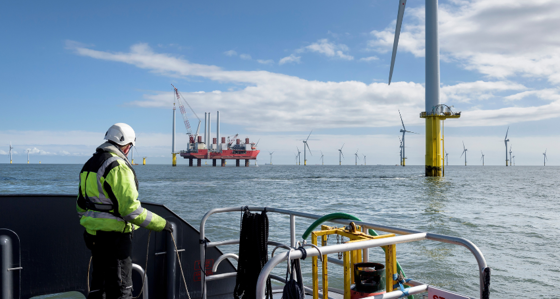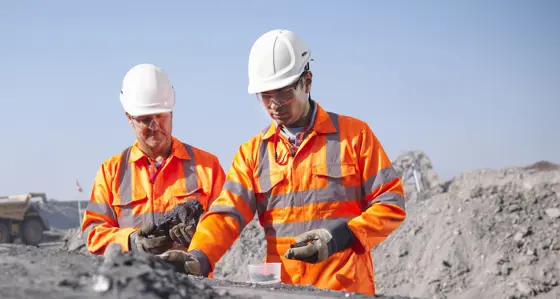
From early adopters to early majority: Driving the next phase of EV growth
7 min read 31 March 2025
EVs and consumer behaviour were the focus at Baringa’s seventh Green Buildings and Transport Forum in March 2025. EV adoption is beginning to move beyond the early adopter phase, opening opportunities as the ecosystem targets the early majority.
At this stage of market development, what considerations should go into proposition design? Where should the value chain focus given broader macroeconomic and consumer behaviour trends?
We had a vibrant debate on these areas, including looking at lessons for the wider residential decarbonisation sector.
EV adoption is accelerating
In the UK, one in four new cars sold is an EV, and there is nearly one charge point for every vehicle. The Zero Emission Vehicle mandate imposes fines of £12,000 per non-compliant vehicle and is therefore acting as a powerful catalyst for change from car manufacturers. With a notable depreciation in Tesla vehicles, we have reached price parity in the second-hand market between EVs and ICE vehicles and this is increasingly occurring across new vehicle segments.
However, as we move from the early adopter phase into the early majority, there are still barriers to continued growth:
- Broken market structure – an influx from Chinese manufacturers, an ever-changing trade tariff environment and misaligned incentives mean automakers are struggling to turn a profit. Learn more about the impact of Trump trade tariffs on UK EV market.
- Unsustainable tariffs – EV-friendly energy tariffs (as low as 7p/kWh) have driven adoption but are loss-leading and unlikely to last at scale.
- Strained supply chains – For example, dealers face challenges among traditional dealership routes - lack of deep product understanding and loss of revenue for the dealership through significantly reduced lifetime O&M costs are leading to fewer EV sales via this channel.
- The last 30% hurdle – While EV sales are growing, reaching full adoption isn’t guaranteed, especially for those without off-street parking or who typically rely on the secondhand vehicle market.
These are complex challenges, and there are no silver bullets. But as Toby Thornton from Baringa emphasised: “The conditions making it challenging for the sector are opening opportunities to reach consumers in the next growth phase. Businesses in the value chain need to think about the early majority consumer, their values and how a proposition can be shaped around that.”
What might those propositions look like? Our discussion homed in on two critical factors: simplicity for consumers and profitability for suppliers.
Consumers want simplicity
There was a clear consensus that simplicity drives uptake. As Thomas Orr from Baringa said: “Hassle is the enemy of adoption.”
Energy suppliers emphasised the importance of simplicity in their go-to-market approach, focusing on helping the mass market customer understand the value of having an EV – and making it easy for them to do so.
A range of available tariffs reflect this approach, but the future market direction will increasingly move towards more straightforward and convenient pricing. Mobility as a service is the ultimate example. Customers don’t want the hassle of sorting insurance, maintenance, charger installation, and tariff. Can they pay one price and get everything included?
It's also important to focus on simple first principles. Buying a car is an emotional decision, so the purchasing decision won’t rely on spreadsheets, payback periods, and emissions savings. As one OEM said, a big part of driving adoption is building great EVs that people love and are great to drive.
But the value chain must be profitable
Keeping it simple for consumers is key, but this can’t come at the expense of profitability if the market is to endure for the long term.
This is a concern across the value chain. OEM supply chains and profit margins are perfected for ICE vehicles, but it’s not currently sustainable for UK OEMs to manufacture cheap EVs that compete with subsidised Chinese cars. Dealerships aren’t incentivised to sell EVs because of challenges with residual values and losses from high-margin servicing and O&M contracts.
On the end-to-end customer journey, there are more challenges to come. Energy suppliers can’t maintain loss-leading tariffs indefinitely, and locational constraints are increasingly likely to challenge automation of EV charging.
This is a complex area, but we discussed several ideas:
- Interoperability – Enabling more interoperability will help drive down costs for everyone.
- Data-driven transparency – More data means a greater ability to tailor propositions, making them simpler for consumers and more cost-effective to scale.
- Incentives – The ecosystem must continue encouraging policymakers to provide the right incentives for encouraging uptake.
What could this look like in practice?
There are interesting ways organisations are incorporating these ideas to bring value to the ecosystem and the customer. We discussed two examples: time-of-use tariffs and ‘as a service’ models.
Time-of-use tariffs
Dan Bolton from Baringa explained how time-of-use tariffs enable energy suppliers to control customers’ EV charging, thereby reducing rates while boosting margins. Suppliers currently reward customers who shift demand, but there are increasing benefits from offering more sophisticated options like incorporating automated smart control and providing energy as a service.
The more energy suppliers move away from selling kWh of electricity and towards becoming a consumer’s decarbonisation partner, the more potential value there is. Baringa modelling showed the ability to generate an additional £1 million of gross profit over a year from more evolved time-of-use tariffs. Energy management can also be simpler for consumers because they don’t have to consider when to charge. Plus, there are key benefits when it comes to load balancing and grid infrastructure investment requirements, which will also contribute to greater affordability for everyone.
‘As a service’ models
Tom Woolley, Product and Strategy Director at SMS, discussed an interesting trial they’re doing with Oxfordshire County Council to increase the uptake of low-carbon technology.
SMS’s energy transition business, Metis, built a free app that takes residents’ smart meter data and provides energy-saving tips. In six months, 7,800 Oxfordshire residents had downloaded the app and connected their smart meter data.
SMS then randomly selected 500 homes and simulated a solar PV and battery system retrofit. Leveraging a partner ecosystem, SMS created an innovative subscription model with zero upfront costs, where residents pay £40 per month. In the app, residents can clearly see the savings they get for the £40 per month and can click to book a survey and get started.
There has been an impressive 65% conversion rate.
Tom credits two key factors with this success: trust and simplicity. The app is through the council, so it’s from a trusted, independent source. It also provides a clear, personalised savings figure, including modelling the best-available energy supplier tariffs that would work for the customer. The subscription model makes it easy to understand the costs vs benefits.
As Tom explained, “The consumer gets the value in month one, can see how much they’ll save, and can say ‘yes’ in three clicks. We don’t go into unnecessary detail. For example, we don’t tell them the energy supplier or tariff; we say they get the best tariff on the market, help them switch and optimise the assets for them. We handle everything end to end with an ecosystem behind it, but the consumer has one simple journey.”
Climate tech and finance company Tallarna has succeeded with a similar approach in both the social housing and C&I space, using a blended funding approach. Their ‘as a service’ model is insurance backed and up to 30 years, with tenants net better off from day one. Like SMS, they work with a partner network to provide the best tariff and optimise systems behind the scenes.
Driving towards a low-carbon future
Simplicity and profitability are essential to drive uptake and ensure a sustainable value chain. As we move towards more mass market EV adoption, these principles will help foster the conditions needed to continue progress towards net zero targets – benefiting the nascent green homes market at the same time.
By being clear about savings, minimising hassle and friction, aligning players in the value chain, and experimenting with new business models, we create a win-win scenario for everyone.
Our next Green Buildings and Transport Forum will be in June. If you’d like to join the discussion, get in touch with Toby Thornton or Rebecca Teasdale. Subscribe to our Energy and Resources newsletter to hear more about future Baringa events.
Our Experts

Related Insights

Trump trade tariffs: Impact on the UK EV uptake
The global automative industry is at a critical juncture, shaped by intersecting forces of electrification, geopolitical trade tensions, and national decarbonisation policy.
Read more
Driving economic growth by securing a cleaner and resilient future for the North Sea
Our report, published in conjunction with Offshore Energies UK (OEUK), outlines how the North Sea can continue to play a pivotal role in the energy system as the world shifts to net zero, while positioning the UK as a resilient, innovative and competitive player in the global energy landscape.
Read more
Crossing the industry divide to drive decarbonisation across Asia-Pacific
Resources organisations are identifying opportunities in the unfamiliar overlap between energy, mining and metals.
Read more
Headwinds for the NEM transition: an alternative scenario for Australia’s NEM
Baringa's analysis explores challenges in Australia's NEM transition, highlighting nuclear deployment delays, slower renewables investment, and extended coal use.
Read moreIs digital and AI delivering what your business needs?
Digital and AI can solve your toughest challenges and elevate your business performance. But success isn’t always straightforward. Where can you unlock opportunity? And what does it take to set the foundation for lasting success?